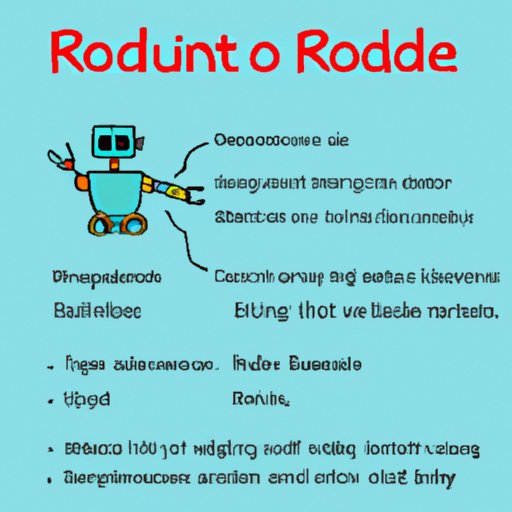Introduction
Coding a robot refers to the process of instructing a robot on how it should act and respond in certain situations. Through software programming, robots can be designed to perform specific tasks autonomously or with minimal human involvement. This article will delve into the basics of coding a robot, from hardware components to debugging and troubleshooting. It will also look at different types of robots and the ethical implications of coding a robot.

Basics of Coding a Robot
To understand how to code a robot, one must first be familiar with the hardware components and programming languages involved. The hardware components include sensors, actuators, processors, memory, and power supply. Sensors are used to detect changes in the environment, such as temperature or light, while actuators are used to move the robot’s body parts. The processor is responsible for coordinating the robot’s activities, while the memory stores information about the robot’s past experiences. The power supply provides energy to the robot.
When it comes to programming languages, there are many options available to choose from. Commonly used languages include C++, Python, Java, and JavaScript. Each language has its own advantages and disadvantages, so it’s important to select the language that best suits the project. For example, if the goal is to create a complex robot, then a language like C++ is recommended. On the other hand, if the goal is to create an interactive robot, then a language like Python may be more suitable.
Building and Coding a Robot from Scratch
For those looking to build and code a robot from scratch, there are several steps that need to be taken. First, the robot needs to be designed and built. This involves choosing the right components, such as sensors and actuators, and assembling them together. Once the robot is built, it needs to be programmed. This involves writing code that tells the robot what to do in various situations. Finally, the robot needs to be tested to ensure that it performs as expected.

Using a Visual Programming Language
For those who don’t want to write code from scratch, there are visual programming languages that can be used to program a robot. These languages use graphical symbols to represent instructions, making them easier to understand. A popular example of this type of language is Scratch, which can be used to program a LEGO Mindstorms robot. With Scratch, users can drag-and-drop blocks of code to create instructions for the robot.
Debugging and Troubleshooting
Debugging and troubleshooting are essential steps when coding a robot. Debugging refers to the process of identifying and fixing errors in the code. This often involves running the code multiple times and testing it in different scenarios. Troubleshooting, on the other hand, involves identifying and resolving issues that arise during the operation of the robot. To troubleshoot, it’s important to have a clear understanding of the robot’s capabilities and limitations.
When troubleshooting a robot, it’s important to pay attention to all possible sources of error. According to a study conducted by the University of Bremen, “when troubleshooting a robot, it is essential to consider both the hardware and software aspects of the system.” This means checking the robot’s hardware components, such as sensors and actuators, as well as the code that is being used to control the robot.
Different Types of Robots
Robots come in many shapes and sizes, and they can be used for a variety of purposes. For example, industrial robots are used in manufacturing, while medical robots are used in surgery. There are also service robots that are used to assist people in their daily lives, such as vacuum cleaners and lawn mowers. Each type of robot requires different programming techniques, so it’s important to understand the capabilities and limitations of each type before attempting to code a robot.
Ethical Implications
As robots become increasingly sophisticated, it’s important to consider the ethical implications of coding a robot. For example, robots could be used to violate privacy laws or to exploit workers. They could also be used to manipulate public opinion or to spread misinformation. As such, it’s important to think carefully about the potential implications of coding a robot before doing so.
According to a report published by the International Committee of the Red Cross (ICRC), “the development of robotics, artificial intelligence, and autonomous systems must take into account ethical principles, including respect for human dignity and non-discrimination.” This means that developers should strive to create robots that are safe, reliable, and ethically sound.
Conclusion
In conclusion, coding a robot is a complex process that requires knowledge of hardware components and programming languages. It also involves building the robot from scratch and using a visual programming language to program it. Debugging and troubleshooting are essential steps in the process, as is considering the ethical implications of coding a robot. By following these steps, anyone can learn how to code a robot.
(Note: Is this article not meeting your expectations? Do you have knowledge or insights to share? Unlock new opportunities and expand your reach by joining our authors team. Click Registration to join us and share your expertise with our readers.)
